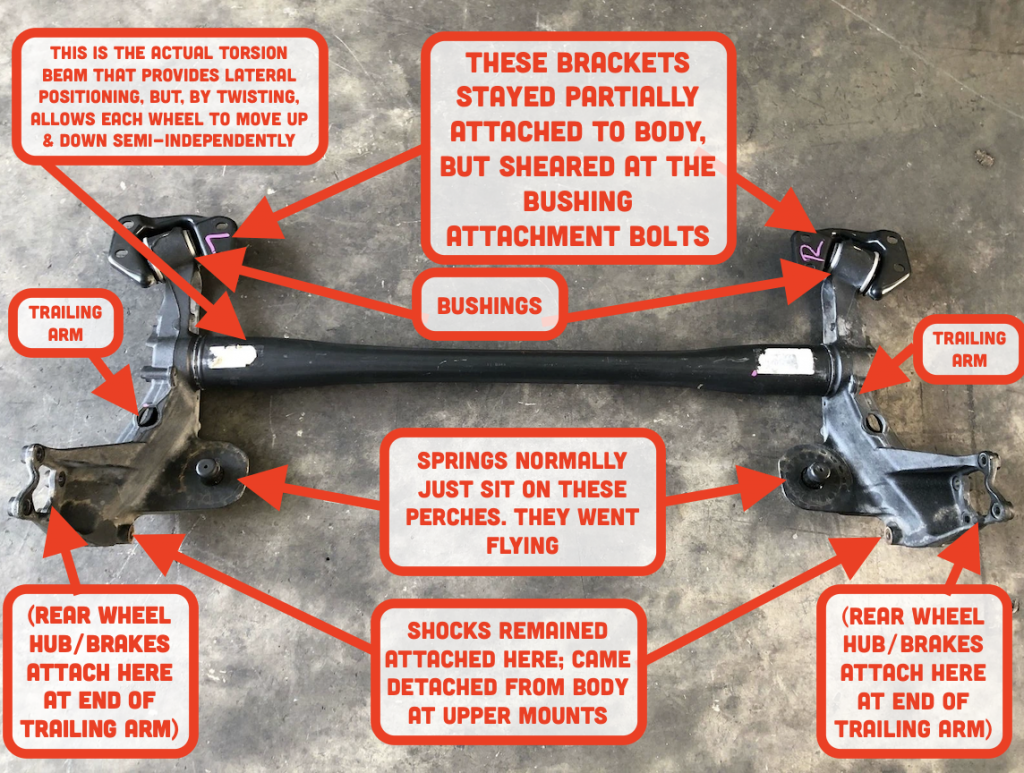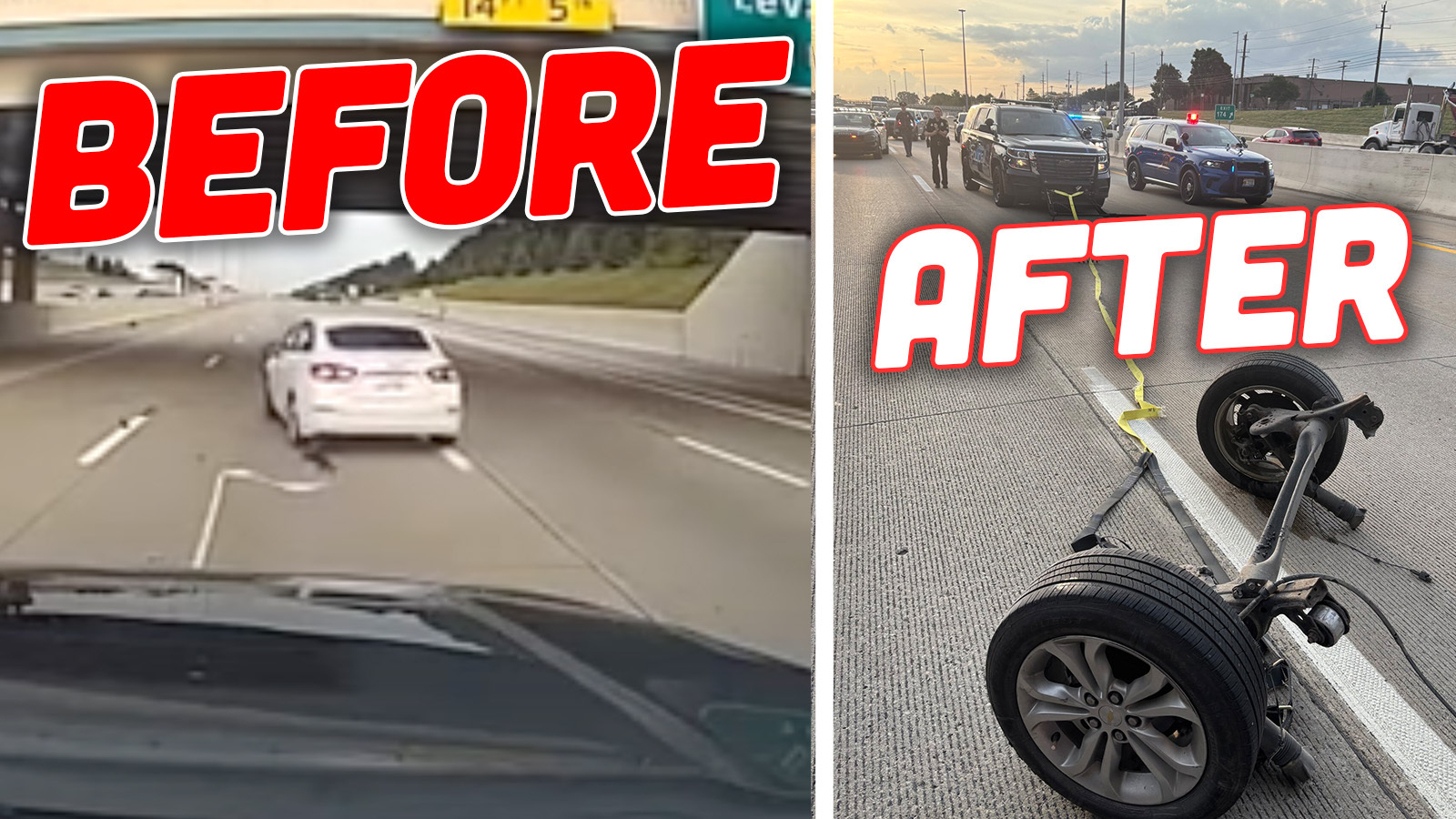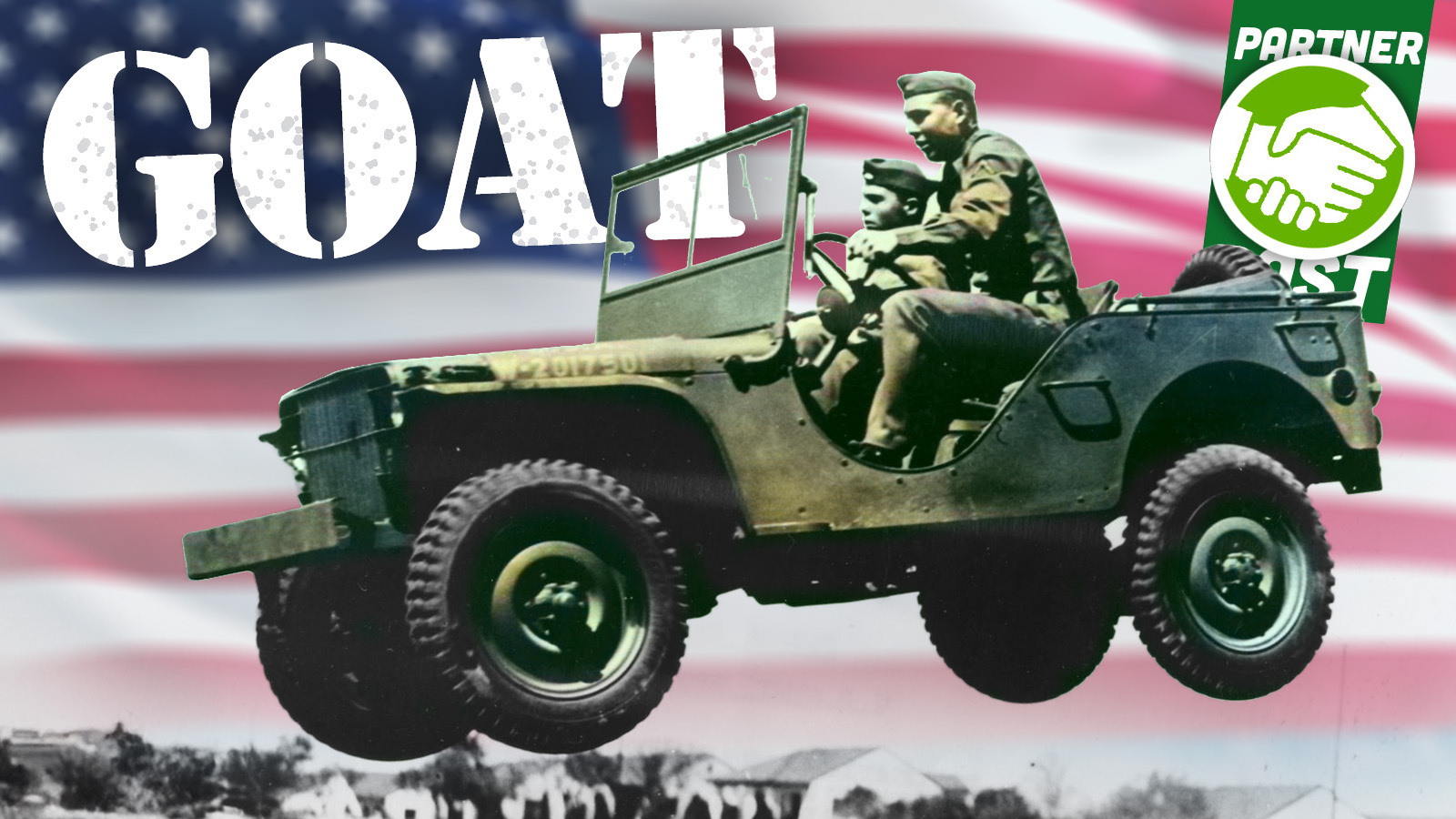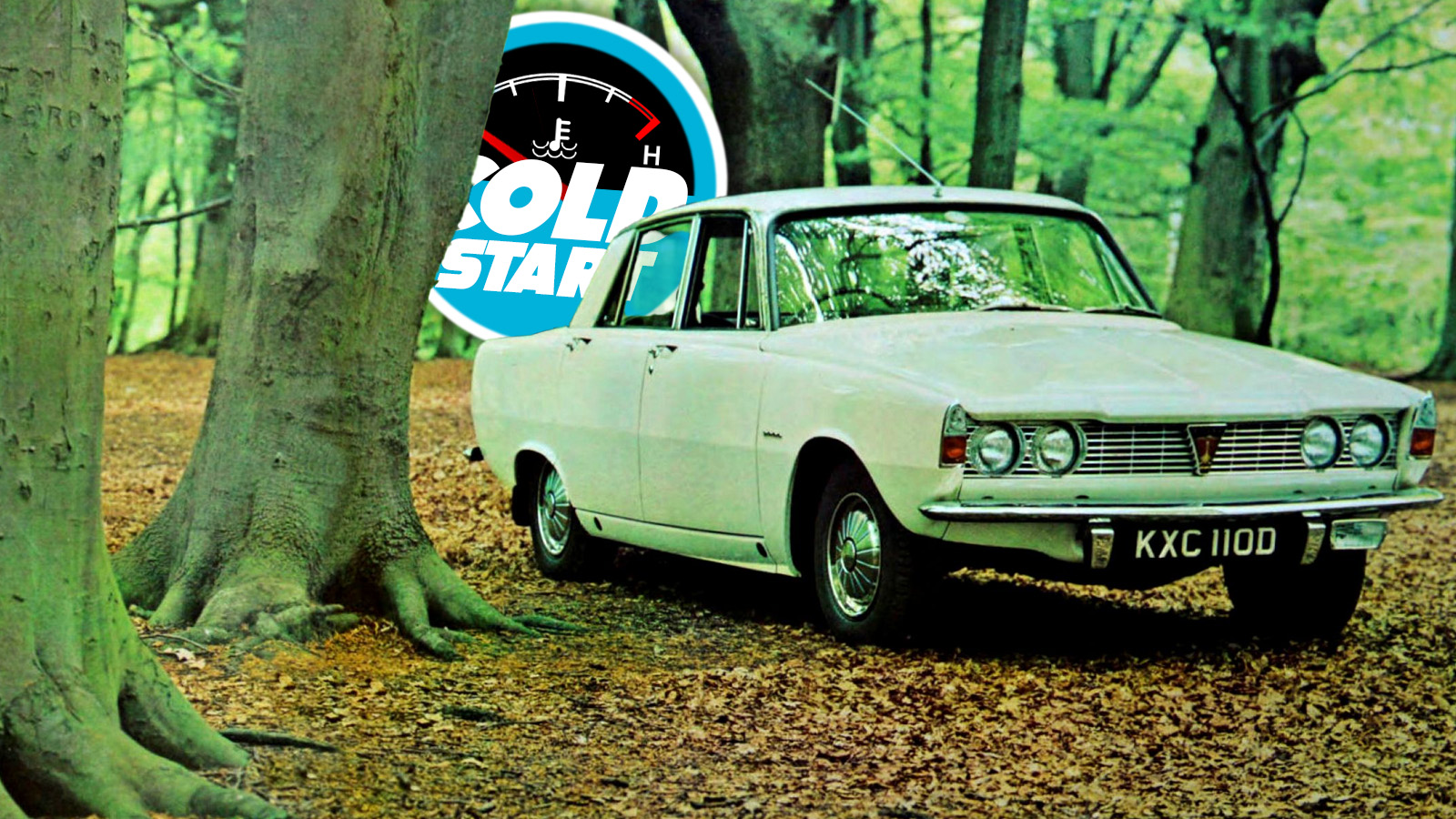Police chases are, statistically, extremely dangerous. According to a study published by the New York State Attorney General’s office in June, 30 percent of pursuits nationwide end in a crash, and nine percent result in some level of injury, whether that be to the suspect, the police, or a bystander. So departments have increasingly adopted “grappler” tools to end chases before tragedy strikes. One Michigan driver learned the hard way how much damage can be done if you try to flee after being grappled —especially if your car has a torsion beam rear end.
The Grappler Police Bumper made waves on its debut in 2018 as a safer, more straightforward way to end police pursuits without endangering bystanders or involved parties. It’s a device deployed from the front of a police car’s bumper that holds out a nylon net. All a user has to do is touch the net to the rear wheel of the car in front, and the nylon gets entangled in the wheel. One piece of the nylon stays attached to the cruiser, allowing the officer to, in essence, “rope in” the captured car by slamming on the brakes, bringing both vehicles to a stop. The device’s inventor, Leonard Stock, told Fox 10 Phoenix in 2023 that he came up with the idea in a dream.
Unsurprisingly, use of the Grappler has spread across the country to dozens of law enforcement agencies. One such agency is the Livonia Police Department in Michigan, which used the tool to great effect on Thursday against a second-generation Chevy Cruze stolen out of Dearborn. Video from onboard the pursuing cop car shows a textbook capture on Interstate 96, but the driver of the Cruze couldn’t seem to accept defeat. Instead, they tried three times to tug their way out of the nylon. On the third tug, disaster struck. Watch for yourself:
In a statement published to Facebook, the department said it called on the assistance of the Michigan State Police to help them out with the fleeing Cruze, which had allegedly been identified as stolen. Here’s what else the agency had to say:
In this case, after being stopped, the driver repeatedly attempted to break free by reversing and then accelerating forward. However, the Grappler held firm and because of the driver’s own actions, the vehicle’s rear axle was ripped off, permanently disabling the car. This is not typical with Grappler deployments and was solely the result of the driver’s reckless attempts to escape.
The 27-year-old male driver from Brighton, along with two female passengers, a 32-year-old from Wayne and a 31-year-old from Livonia, were all arrested and taken into custody without further incident. Thankfully, no injuries were reported.
What Exactly Happened Here?
The Chevy Cruze uses a torsion beam rear suspension. Also known as a twist beam, it’s a common piece of design in modern, front-wheel drive economy cars that uses a transversely positioned metal beam to hold the wheels, tires, and brakes to the car, via just two mounting points on a set of trailing arms linked by the twist beam. Like most other modern suspension designs, the suspension includes a shock and spring per wheel (the former is bolted to the body, and the latter sits pressed between the body and the torsion beam spring perch).

Torsion beams are generally panned by enthusiasts, as they can’t provide the same articulation or refinement as a true independent suspension. But they have exceptional benefits. Torsion beams are simple to work on and cheap to produce, which is why you see them on so many everyday, low-cost cars. And they still provide some level of wheel independence, as the beam can twist when one wheel encounters a bump, so as not to upset the other (hence the “torsion” in torsion beam). But because the semi-independent suspension is only bolted down in two spots (plus the shocks, though those are much weaker attachments), they are particularly susceptible to being ripped out when encountering a Grappler tool. At least, when the driver really forces the issue.
That’s exactly what happened here. On that third tug, the Grappler held onto the left wheel, which stayed attached to the hub, which was connected to the trailing arm, which was connected to the torsion beam that connected to the other trailing arm and wheel. Ultimately, the two lowly bolts holding the suspension to the unibody sheared away, and everything else attached to the beam, including the shocks, the brakes, and the right wheel—came with it. The springs, meanwhile, were never formally attached to the car in the first place—just held in place by pressure (OK, there might have been some very basic hold-down clamps). So when the torsion beam was ripped out, the springs simply left the chat. If you watch closely in the above video, you can actually see one of the springs roll into frame on the pavement.

Here’s a top-down view of the Cruze’s torsion beam design, with a detailed explanation of each part and what went wrong, put together by the incredible David Tracy. The two connection points are actually held to the car via metal brackets, which stayed connected to the car, at least partially, going by the photo published by the Michigan State Police.
[Ed Note: I should add that some Cruze’s rear torsion beams featured a Watt’s Link, but I doubt this one did. -DT].
The lesson here? If you get grappled while trying to flee police in a car equipped with a torsion beam, don’t try to break free. You won’t just lose a tire, you’ll lose the entire rear end of your car.
Top photo: Michigan State Police and Livonia Police Department









Am I the only one bothered by all of the vehicles driving around the cops in the middle of the takedown?
This reminds me of the time a large trash truck tried to crash through the street barriers around the US Capitol. It was nothing nefarious, just a driver on his cell who didn’t take police directions to stop (trucks not allowed on the streets around the Capitol.) But it only took one hit at about 30 mph to rip the entire front end off the trash truck (I have pictures.) All of the bolts holding the front rack to the truck frame just popped off like they had no shear strength rating.
Well it is a FWD car. So technically can still drive away, just slowly.
Why didn’t one of the other cop cars pull up behind the now-stopped Cruze, and apply a little force to the Cruze’s rear bumper (to hold a little tension on the strap)? Then there would have been no opportunity for the car thief to back up and try to yank free.
But then there would be no cool video! Seriously, it is best to keep some distance from a determined felon if possible. Cops are also extremely bad at boxing in fleeing felons, if the internet has any truth to it, so would probably have been a wasted effort resulting in additional body damage to repair on the cruiser.
Third time is the charm.
Was this grappler designed by anime supervillains?
Or perhaps Batman?
I could ask the same about the very incomplete suspension.
I have a Subaru twist beam suspension on a subframe, and it’s all of one piece.
The beam is the spring, and this design has a coil spring in the center of the beam which is adjustable by tensioning or relaxing a bolt.
Thus it acts as an anti sway bar as well.
I would struggle to disagree more – comment that these are not useful. Last year some genius stole a car and drove through my ‘village’ topping 100mph on two-lane, 40 mph roads (actually only about 15 miles from Livonia where this incident occurred). If they’d been able to grapple him and end the chase it would have prevented a few accidents in our town. There are also 6 schools within a mile of my house. Thankfully it was a few hours after the sidewalks cleared of kids.
American Graffiti, but the civilian car loses its rear end instead of the cop car. Damn, that was finny (the movie).
“30 percent of pursuits nationwide end in a crash, and nine percent result in some level of injury, whether that be to the suspect, the police, or a bystander”
Does that count the injuries sustained by the suspects on their way into the cop car?
One of my neighbors went airborne and was caught between two billboard poles 15 feet off the ground.
Police claim they weren’t chasing him.
Anyone believe that?
This happened in a completely flat area.
Car was an older mustang, didn’t appear modified or particularly fast.
Car was locked between the two posts, and unrecognizable.
Appeared shredded, as some cars do after collisions with trains.
I went to see the car, to see if it was the neighbor.
They had removed his body, but couldn’t get the car down.
Crash was harsh enough his shoes had come off.
According to police account, this went from normal traffic to the crash in seconds.
Witness accounts differed.
Maybe it was aliens.
We’ve all seen cars do weird things, but I can’t figure how he got that kind of height and speed.
Those support posts had no give, and his car was wider than the opening.